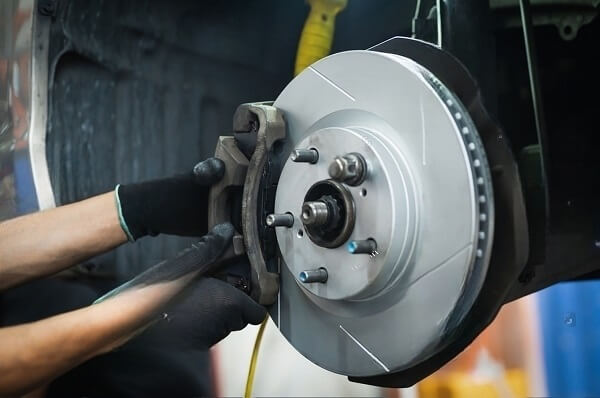The Holden Colorado has a nice interior and is reasonable to drive. Today, we will examine some of the common Holden Colorado problems, if you own one of these vehicles.
What is Holden Colorado?
General Motors Thailand originally introduced the Holden Colorado in 2008, designed especially for the Australian market to take the place of the Holden Rodeo. The Holden Colorado is marketed as a mid-size truck in America under the Chevrolet Colorado name. Over the years, the vehicle has experienced abundant modifications, including an upgrade in 2010 that included new interiors, taillights, and headlights.

9 Common Holden Colorado Problems
Here are some of the common complications related to the Holden Colorado:
1. Transmission Shaking at Low Speed
The Holden Colorado’s transmission tends to shake in low gear, especially when acceleration is required. This occurs due to a problem with the torque converter.
2. Torque Converter Malfunction
A common issue that can give you a shaky sensation when driving. The torque converter is also responsible for keeping the car moving while it is in gear and causing it to slow down when you shift gears. Unfortunately, Holden, Colorado is not constructed well, and problems started to arise sooner than expected.
3. Front Exhaust Mount Failure
Holden Colorado owners frequently experience problems with their front exhaust mount. This is because your exhaust is secured by a simple rubber band, which may break loose with time and cause your exhaust to loosen up. The catalytic converter and silencer are supported by the exhaust mounts on the front of the car. Your car will start to shake a lot while you travel down the road if these mounts fail.
4. Front Brake Calliper Leak
A Holden Colorado’s front brake calipers could leak fluid, which will weaken the brakes. This is a regular problem with Holden Colorado; when it occurs, the car either has difficulties stopping at all or starts to move to one side upon braking.

5. Clogged Catalytic Converter
Smoke and other particles can clog the catalytic converter in your Holden Colorado, making it less effective at filtering pollutants. This can result in a Holden Colorado using more fuel and performing worse than usual because it will cause it to emit more emissions than usual.

6. Bad Valve Seat
The Holden Colorado’s valve seat can deteriorate with time, which will result in the engine losing compression.
7. Uneven Tyre Wear
Suspension component glitches can cause uneven tire wear, which can be a sign of problems with suspension bushings, struts, or shock absorbers.

8. Excessive Bouncing
An unstable or bumpy ride is usually due to shock and other problems affecting the smooth movement of a car.
9. Suspension Noise
Clunking, squeaking, or rattling produced on bumpy roads could be symptoms of suspension parts that need to be replaced.
Similar Posts
- Problems After AFM Delete
- What Does The Emission System Problem Mean
- Ford 3.3L V6 Problems
- Ford Sync Update Problems
8 Maintenance Tips to Avoid Problems
The following maintenance recommendations for the Holden Colorado can help avoid common problems:
1. Regular Maintenance
Regular service is needed as per the manufacturer’s instructions. Most maintenance schedules include inspection of various parts, fluid checks, and changing the oil.
2. Fluid Inspections
The important fluids, including gearbox oil, brake fluid, and coolant must be regularly checked as to their level and condition. But even a small quantity of contaminated fluids could lead to serious problems.
3. Examine Hoses and Belts
Inspect belts and hoses for wear, cracks, or leaks. Replace them if necessary to prevent unexpected breakdowns.
4. Tire Maintenance
Most importantly, be sure your tires are properly inflated and check the tread periodically. Rotate the tires as recommended to ensure even wear and extend their life.
5. Battery Health
Be sure the connection is tight and examine battery terminals for corrosion. Keep an eye on the battery’s health to prevent unexpected breakdowns, monitor the battery’s condition, and replace it before its power is significantly reduced.
6. Inspections of the Brake System
Periodically check the brake fluid, rotors, and pads. Strange sounds, vibrations, or the loss of braking power should be dealt with immediately.
7. Pay Attention To Warning Signs
Listen out for any unusual vibrations or sounds and monitor the dashboard warning lights. If such signs are ignored, they could cause more serious problems.
8. Keep it Clean
Frequent washing of the car, particularly under the car will also prevent rust and corrosion in areas that see hard conditions.
Such problems have presented some owners with reliability challenges, which in turn introduce opportunities for improvement of future models or updates.


![[FIXED] Holden Colorado Problems – 9 Common Issues Holden Colorado Problems](https://carstale.com/wp-content/uploads/holden-colorado-problems-1024x457.jpg)